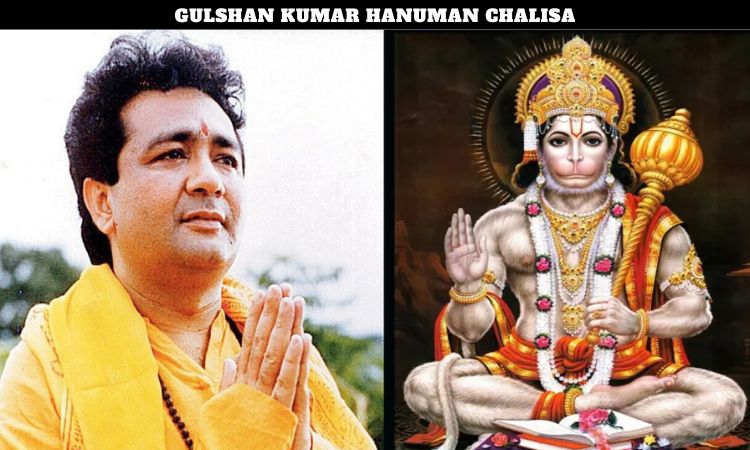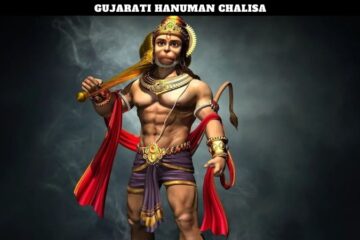
In the vast tapestry of Indian devotional music, few names resonate as profoundly as Gulshan Kumar. A visionary entrepreneur and the founder of T-Series, he single-handedly revolutionized the music industry, making spiritual and popular music accessible to the masses. Among his myriad contributions, one stands out as an unparalleled phenomenon: the Gulshan Kumar Hanuman Chalisa. More than just a musical rendition, it became a cultural touchstone, a daily prayer for millions, and an enduring symbol of faith and devotion across generations.
The Man Behind the Movement: Gulshan Kumar’s Vision
Born in a humble family, Gulshan Kumar Dua started his journey selling fruit juice in Delhi. His innate understanding of the common man’s aspirations and his fervent belief in the power of devotion led him to establish Super Cassettes Industries, later known as T-Series. His initial focus was on pirating popular Bollywood songs, but his true calling emerged when he ventured into devotional music. He observed that while religious hymns and bhajans were deeply ingrained in Indian culture, their availability and quality were often limited. Gulshan Kumar saw an opportunity not just for business, but for spiritual service.
He embarked on a mission to democratize devotional music, making it affordable and widely available. He brought together talented singers, composers, and musicians, investing heavily in production quality. His philosophy was simple: if people could easily access high-quality devotional content, their spiritual lives would be enriched. This vision culminated in numerous iconic albums, but none achieved the monumental status of his rendition of the Hanuman Chalisa.
The Genesis of an Icon: Gulshan Kumar Hanuman Chalisa
The Hanuman Chalisa, a devotional hymn of 40 verses (excluding the opening and closing couplets) in praise of Lord Hanuman, composed by the 16th-century saint Tulsidas, is one of the most revered texts in Hinduism. It is chanted by millions daily for strength, courage, and protection. Before Gulshan Kumar, various versions existed, but none had captured the collective consciousness quite like his.
What made the Gulshan Kumar Hanuman Chalisa so special? It was a confluence of several factors. Firstly, the rendition itself was imbued with a profound sense of sincerity and devotion. Sung by Hariharan, with music composed by Lalit Sen and Chander, it struck a perfect balance between traditional reverence and contemporary appeal. The melody was simple, yet deeply moving, making it easy for listeners of all ages to connect with. The clear pronunciation of the Sanskrit verses ensured that the meaning was conveyed effectively, allowing devotees to truly absorb the essence of each stanza.
Secondly, Gulshan Kumar’s distribution strategy was revolutionary. T-Series flooded the market with affordable cassettes, making the Hanuman Chalisa accessible even in the remotest corners of India. This mass availability, coupled with its heartfelt rendition, transformed it from a niche devotional track into a household staple. It was played in temples, homes, shops, and even on public transport, becoming an omnipresent soundscape of Indian life.
A Cultural Phenomenon and Spiritual Anchor
The impact of the Gulshan Kumar Hanuman Chalisa transcended mere music. It became a spiritual anchor for countless individuals. For many, starting the day with this particular rendition became a ritual, believed to bring peace, prosperity, and strength. During times of distress, fear, or uncertainty, the calming yet powerful chants offered solace and courage. Its popularity soared to such an extent that it became synonymous with the Hanuman Chalisa itself for an entire generation.
The video version, featuring Gulshan Kumar himself, further amplified its reach. His humble demeanor and genuine devotion visible in the video resonated deeply with viewers, reinforcing the authenticity of the offering. This visual representation, coupled with the soul-stirring audio, created an immersive devotional experience that was unprecedented at the time.
Even decades after its release, and long after Gulshan Kumar’s tragic demise, the Gulshan Kumar Hanuman Chalisa continues to be the most streamed and downloaded version of the hymn. Its presence on digital platforms, from YouTube to music streaming services, ensures its continued relevance and accessibility to a global audience. New generations, often introduced to it by their parents and grandparents, embrace it with the same fervor, testament to its timeless appeal.
The Spiritual Significance of the Hanuman Chalisa
To understand the profound impact of Gulshan Kumar’s rendition, one must appreciate the spiritual weight of the Hanuman Chalisa itself. Composed by Goswami Tulsidas, a great devotee of Lord Rama, the Chalisa is a concise yet powerful tribute to Lord Hanuman, the epitome of devotion, strength, wisdom, and selfless service. Each verse praises a different aspect of Hanuman’s character and exploits, from his immense physical power to his unwavering loyalty to Rama.
Chanting the Hanuman Chalisa is believed to invoke Lord Hanuman’s blessings, granting devotees courage to overcome obstacles, protection from negative influences, and the ability to achieve their goals. It is particularly revered for its ability to alleviate fear, anxiety, and ill health. The rhythmic chanting and the profound meaning embedded in each line create a meditative state, fostering a deeper connection with the divine. Gulshan Kumar’s rendition, with its clear vocals and reverent pace, facilitated this spiritual connection for millions, making the profound accessible.
The Enduring Legacy
The Gulshan Kumar Hanuman Chalisa is more than just a successful music project; it is a legacy of faith, accessibility, and cultural integration. It demonstrated how devotional music, when presented with sincerity and made widely available, could become a powerful force for spiritual upliftment and cultural preservation. Gulshan Kumar’s vision transformed the way devotional music was perceived and consumed, paving the way for countless other artists and productions.
His contribution extended beyond just this one hymn. He cultivated an entire ecosystem of devotional music, providing a platform for numerous artists and enriching the spiritual lives of millions. The Gulshan Kumar Hanuman Chalisa remains his most iconic offering, a testament to his unwavering devotion and his pioneering spirit. It continues to inspire, comfort, and empower, echoing through homes and temples, a timeless melody of faith.
Full Hanuman Chalisa
Doha: Shri Guru Charan Saroj Raj, Nij Man Mukur Sudhari. Barnau Raghuvar Bimal Jasu, Jo Dayaku Phal Chari. Buddhiheen Tanu Janike, Sumirau Pavan Kumar. Bal Buddhi Vidya Dehu Mohi, Harahu Kalesh Vikar.
Chaupai:
Jai Hanuman Gyan Gun Sagar. Jai Kapis Tihun Lok Ujagar.
Ram Doot Atulit Bal Dhama. Anjani Putra Pavan Sut Nama.
Mahaveer Vikram Bajrangi. Kumati Nivar Sumati Ke Sangi.
Kanchan Baran Biraj Subesa. Kanan Kundal Kunchit Kesa.
Hath Bajra Aur Dhwaja Biraje. Kandhe Moonj Janeu Saje.
Shankar Suvan Kesari Nandan. Tej Pratap Maha Jag Bandan.
Vidyavan Guni Ati Chatur. Ram Kaj Karibe Ko Atur.
Prabhu Charitra Sunibe Ko Rasiya. Ram Lakhan Sita Man Basiya.
Sukshma Roop Dhari Siyahi Dikhava. Vikat Roop Dhari Lank Jarava.
Bheem Roop Dhari Asur Sanhare. Ramchandra Ke Kaj Sanvare.
Lay Sanjivan Lakhan Jiyaye. Shri Raghubeer Harashi Ur Laye.
Raghupati Kinhi Bahut Badai. Tum Mam Priya Bharat Sam Bhai.
Sahas Badan Tumhro Jas Gaave. As Kahi Shripati Kanth Lagave.
Sanakadikk Bramhadi Munisa. Narad Sarad Sahit Ahisa.
Jam Kuber Digpal Jahan Te. Kavi Kovid Kah Sake Kahan Te.
Tum Upkar Sugreevahi Keenha. Ram Milay Rajpad Deenha.
Tumhro Mantra Vibhishan Mana. Lankeshwar Bhaye Sab Jag Jana.
Jug Sahasra Jojan Par Bhanu. Leelyo Tahi Madhur Phal Janu.
Prabhu Mudrika Meli Mukh Mahi. Jaladhi Langhi Gaye Achraj Nahi.
Durgam Kaj Jagat Ke Jete. Sugam Anugrah Tumhre Tete.
Ram Duare Tum Rakhvare. Hot Na Agya Binu Paisare.
Sab Sukh Lahai Tumhari Sarna. Tum Rakshak Kahu Ko Darna.
Aapan Tej Samharo Aapai. Teeno Lok Hank Te Kanpai.
Bhoot Pishach Nikat Nahi Ave. Mahaveer Jab Naam Sunave.
Nase Rog Hare Sab Peera. Japat Nirantar Hanuman Beera.
Sankat Se Hanuman Chudave. Man Kram Vachan Dhyan Jo Lave.
Sab Par Ram Tapasvi Raja. Tin Ke Kaj Sakal Tum Saja.
Aur Manorath Jo Koi Lave. Soi Amit Jeevan Phal Pave.
Charo Jug Partap Tumhara. Hai Parsiddh Jagat Ujiyara.
Sadhu Sant Ke Tum Rakhvare. Asur Nikandan Ram Dulare.
Ashta Siddi Nau Nidhi Ke Data. As Var Deen Janaki Mata.
Ram Rasayan Tumhre Pasa. Sada Raho Raghupati Ke Dasa.
Tumhre Bhajan Ram Ko Pave. Janam Janam Ke Dukh Bisrave.
Ant Kaal Raghuvar Pur Jai. Jahan Janam Hari Bhakta Kahai.
Aur Devta Chitt Na Dharai. Hanumat Sei Sarva Sukh Karai.
Sankat Kate Mite Sab Peera. Jo Sumire Hanumat Balbeera.
Jai Jai Jai Hanuman Gosai. Kripa Karahu Gurudev Ki Nai.
Jo Sat Bar Path Kare Koi. Chhutahi Bandi Maha Sukh Hoi.
Jo Yah Padhe Hanuman Chalisa. Hoye Siddhi Sakhi Gaurisa.
Tulsidas Sada Hari Chera. Keeje Nath Hriday Mah Dera.
Doha: Pavan Tanay Sankat Haran, Mangal Murati Roop. Ram Lakhan Sita Sahit, Hriday Basahu Sur Bhoop.
